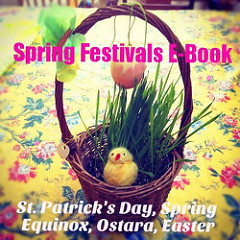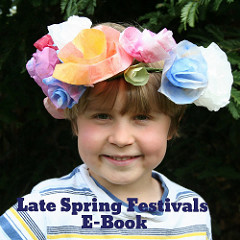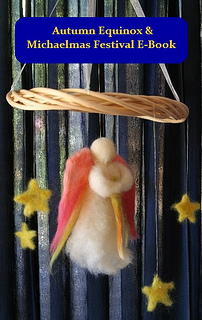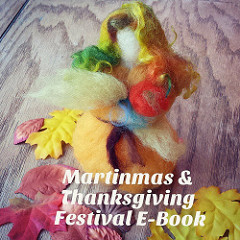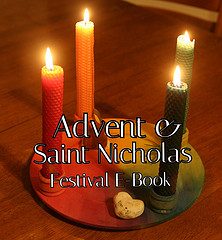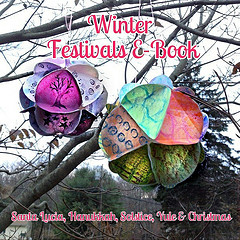
We held a small ceremony last night to celebrate Imbolc, or Candlemas. It was just the four of us and it was perfect, I think. In my research, Imbolc and Candlemas led me to Saint Brigid, who led me to Brigid, the Celtic triple goddess, who whispered in my ear how very alike she is to Hestia, the Greek goddess of hearth and home. Now, Hestia and I go way back, and at that moment I was instantly comfortable, on familiar turf, “at home.” I can work with this!
When I create a ceremony or celebration, I have this little tendency to go overboard. When the intention is to celebrate with my small children, I have learned that the key is to keep it simple. I usually let my imagination run wild for a while, come up with lots of complicated and meaningful ideas, and then I consciously scale it back, make it shorter, and let the symbols speak for themselves.

After dinner, we sat by the fire on our sheepskin rug. I had purchased a 3-inch beeswax pillar candle and we softened some modeling beeswax in warm water. We each fashioned a design or symbol to attach to our “FamilyCandle.” As we did so, I shared a poem about Candlemas Day.
“If Candlemas Day be fair and bright, Winter will take another flight. If Candlemas Day be cloud and rain, Winter is gone and will not come again.”
Then this, which I wrote:
“Round the hearth, with our fire burning bright, we speak from our hearts. With kind words we kindle our hearts’ light.”
We then talked about Imbolc being the midpoint of winter and that after that night, we’d be moving toward the spring. We talked about family and home.
The boys mostly played with the colorful wax and stuck chunks of it on our Family Candle. Asher called his chunk of blue the “rainbow bridge.” Daddy made a beautiful interlocking rings design, with four rings representing the four of us. I made a star with a rainbow and a little blazing fire (because stars and fires mean winter to me, and a rainbow gives me hope for the spring).

Here is our Family Candle in this morning’s light.

Here you can see the boys’ additions to it.
While we modeled our beeswax and added it to our candle, we thought of with words that mean “family” and “home” to us, things we associate with our home and being a family together. We wrote these words in crayon on a watercolor painting I made earlier in the day. Lucas wrote words for himself. Not to be outdone by his older brother, Asher followed suit, with his own version of writing.

Here is our family artwork hanging above our kitchen table. Love, peace, joy, family, us, tribe, prosperity, health, warmth, luck(e), respect, happiness, hope, laughter, help, rest, safety, boys, hearth—and contributions from Asher, such as “squirrel family in the snow!”
Especially for 4-year-old Asher, we did a small motion play from A Child’s Seasonal Treasury by Betty Jones called Groundhog Day.
Bears hug in their caves so snug. (Hug self with eyes closed; smile.)
Squirrels are restless in their hollow tree. (Make a hole with one hand, wiggle fingers of other hand through hole.)
Fox family yawns and stretches in their lair. (Yawn and stretch limbs.)
Groundhog pokes his head from the ground. (Make large ring with arms and poke head through.)
Whiffs and sniffs and looks around. (Sniff, look around through hole.)
Will or won’t his shadow be found? (Nod “yes,” then “no,” shrug shoulders.)
If it is, we all will know (Nod “yes” and rise to squat position.)
Spring is getting ready to go! (Spring up in place with outstretched limbs.)
Finally, while we all held our decorated Family Candle together, we finished with this verse by Marsha Johnson.
Bless this candle in our hands.
Bless this flame as here we stand.
Bless the faces ’round this light.
Bless all people on this night.
We’ll be burning this Family Candle during dinner and on weekends when we are home for the rest of winter.




































































